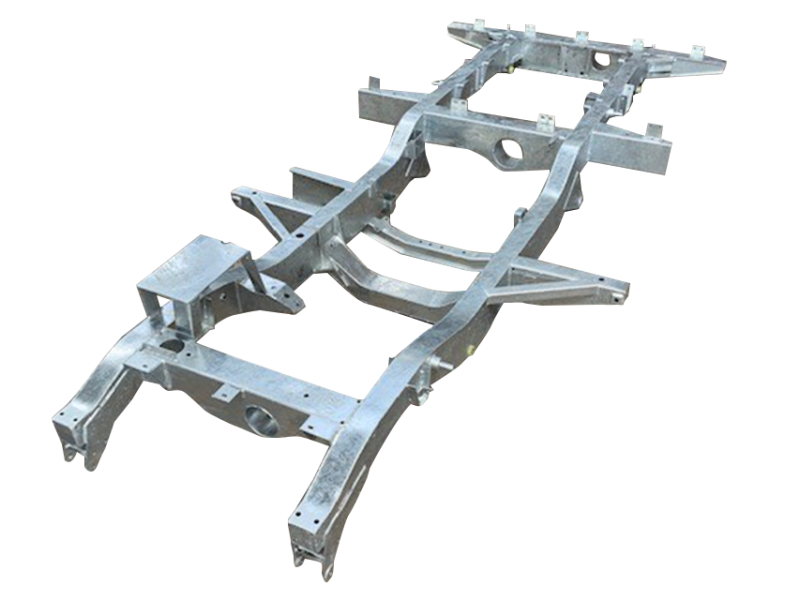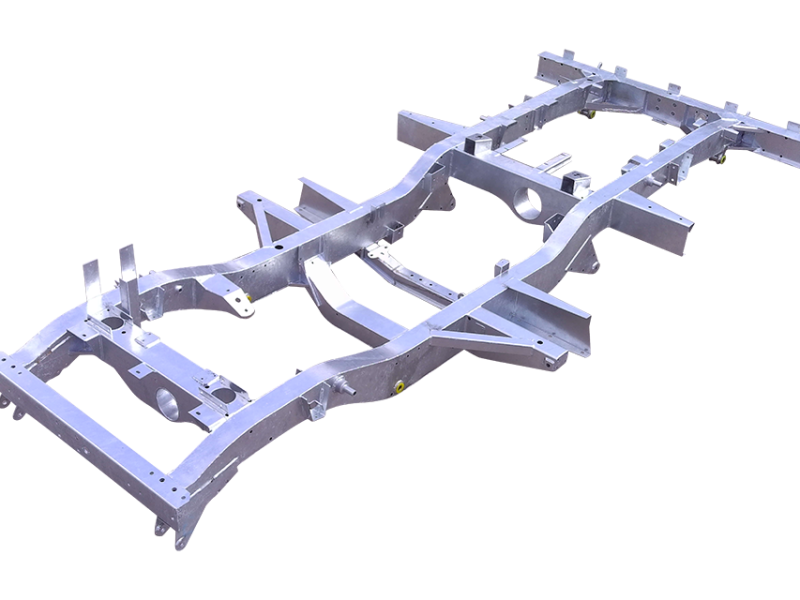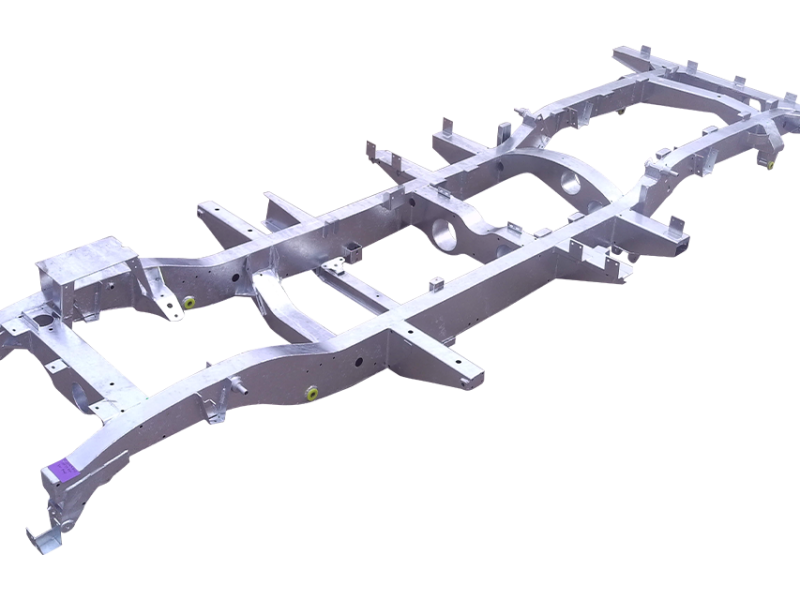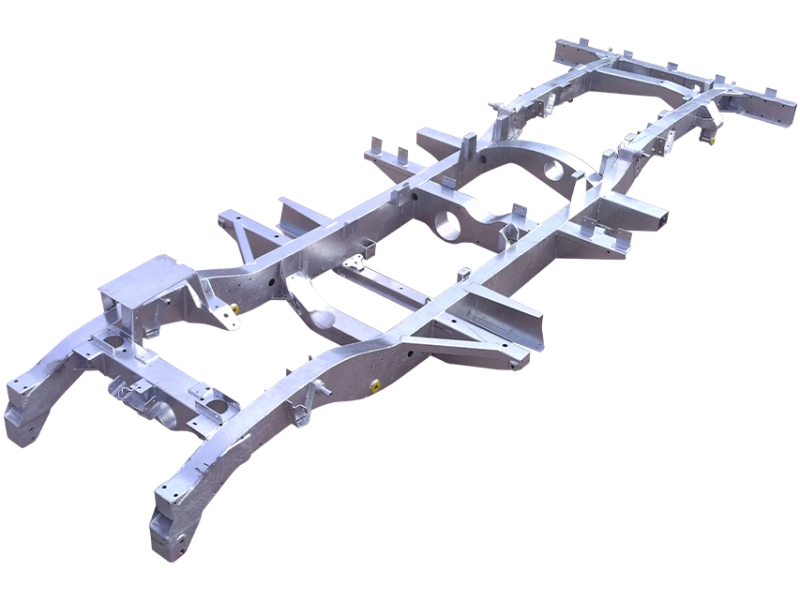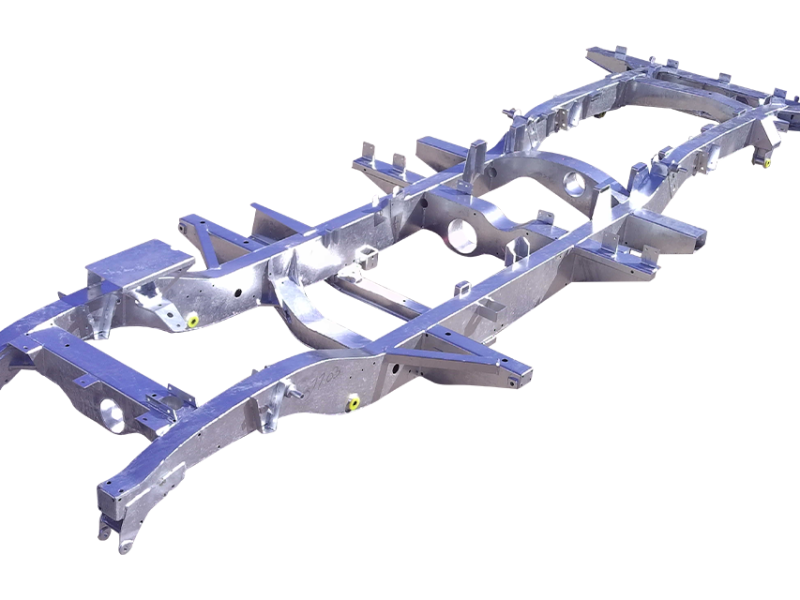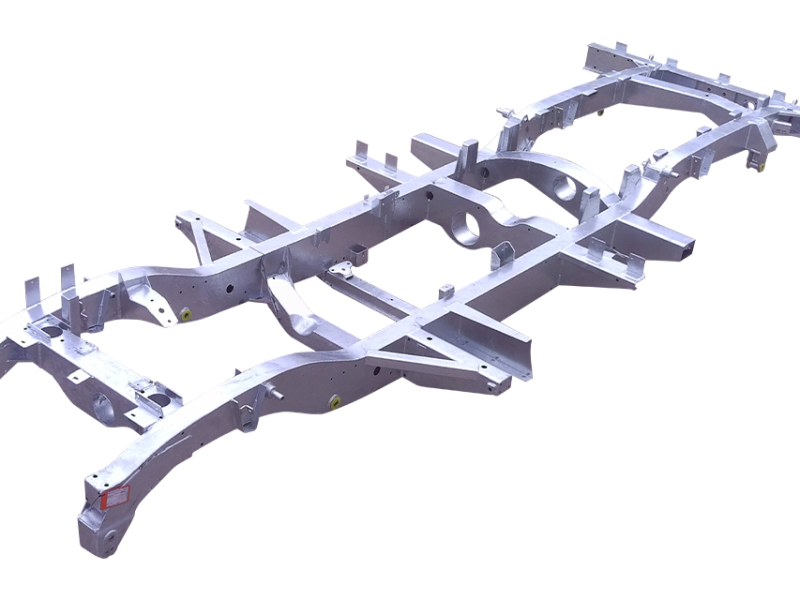The series III had the same body and engine options as the preceding IIa, including station wagons and the One-Ton versions. Little changed cosmetically from the IIA to the series III. The series III is the most common series vehicle, with 440,000 of the type built from 1971 to 1985. The headlights were moved to the wings on late production IIA models from 1968/9 onward (ostensibly to comply with Australian, American and Dutch lighting regulations) and remained in this position for the series III. The traditional metal grille, featured on the series I, II and IIA, was replaced with a plastic one for the series-III model. The 2.25-litre engine had its compression raised from 7:1 to 8:1, increasing the power slightly (the high compression engine had been an optional fit on the IIa model for several years). During the series-III production run from 1971 until 1985, the 1,000,000th Land Rover rolled off the production line in 1976.
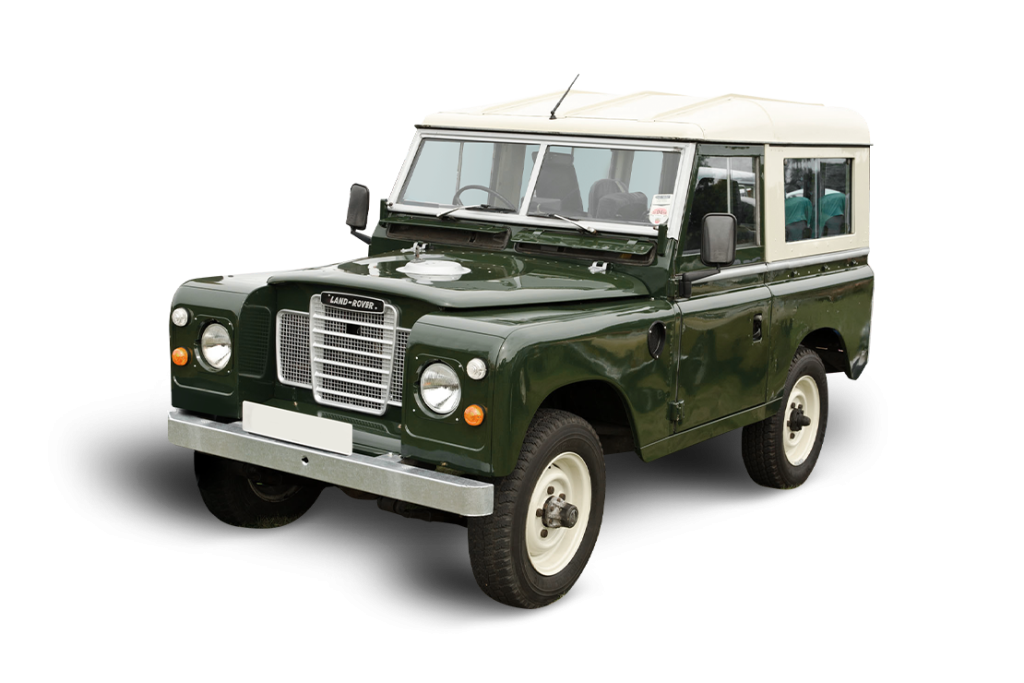
Series 3 chassis
-
Series 3 88 inch Richards chassis
€2.738,23 – €3.233,23Opties selecteren Dit product heeft meerdere variaties. Deze optie kan gekozen worden op de productpagina -
Series 3 88 inch light weight Richards chassis
€2.913,68 – €3.299,68Opties selecteren Dit product heeft meerdere variaties. Deze optie kan gekozen worden op de productpagina -
Series 3 4 cylinder 109 inch Richards chassis
€2.604,93 – €4.055,93Opties selecteren Dit product heeft meerdere variaties. Deze optie kan gekozen worden op de productpagina -
Series 3 4 cylinder 1 ton 109 inch Richards chassis
€3.931,29 – €4.212,29Opties selecteren Dit product heeft meerdere variaties. Deze optie kan gekozen worden op de productpagina -
Series 3 6 cylinder 109 inch Richards chassis
€3.776,41 – €4.162,41Opties selecteren Dit product heeft meerdere variaties. Deze optie kan gekozen worden op de productpagina -
Series 3 6 cylinder 1 ton 109 inch Richards chassis
€3.931,29 – €4.213,29Opties selecteren Dit product heeft meerdere variaties. Deze optie kan gekozen worden op de productpagina
Land Rover Series 1, 2 and 3
The Land Rover Series 1, 2 and 3, commonly referred to as Series, are compact British offroad vehicles, produced by the Rover Company since 1948. Later this became British Leyland. The Land Rover distinguished itself because it was inspired by the World War 2 Jeep.
From launch, it was the first mass-produced civilian four-wheel drive car with doors on it, and an available hard roof. Contrary to conventional car and truck chassis, it used a sturdier fully box-welded frame. Furthermore, due to post-war steel shortage, and aluminium surplus, Land Rovers received non-rusting aluminium alloy bodies, favouring their longevity. In 1992, Land Rover claimed that 70% of all the vehicles they had built were still in use.
Most series models feature leaf-spring suspension with selectable two or four-wheel drive (4WD), however series I’s produced between 1948 and mid-1951 had constant 4WD via a freewheel mechanism, and the Stage 1 V8 version of the series III featured permanent 4WD. All three models could be started with a front hand crank and had the option of front & rear power takeoffs for accessories.
After adding a long wheelbase model in 1954, Land Rover also offered the world’s first four / five door, 4WD off-road station wagon in 1956. Series Land Rovers and Defenders continually excelled in space utilization, offering (optional) three abreast seating in the seating rows with doors, and troop seating in the rear, resulting in up to seven seats in the SWB, and up to ten seats in the LWB models, exceeding the capacity of most minivans, when comparing vehicles of the same length.

